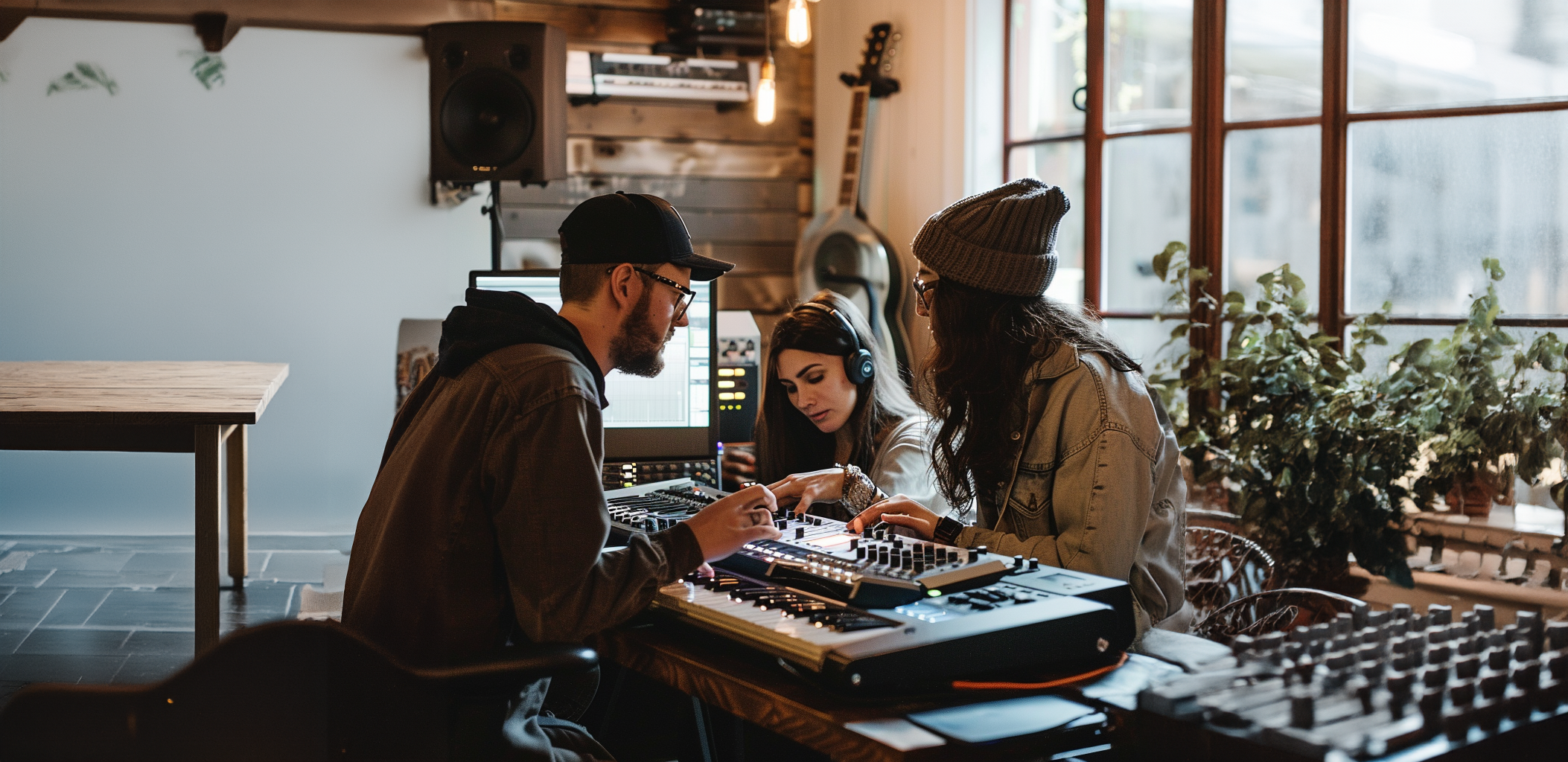
Navigating Royalty Distribution in Collaborative Works
Collaborations in the music industry are not a new phenomenon. However, over time,they have gained even more traction, being a usual way of composing, and making it common to encounter works with several rights holders. An important aspect to consider is the complexities that arise in the distribution of rights when multiple holders are involved. We will explore these issues and see how to ensure fair compensation in the collaborative music landscape.
Understanding Collaborative Works: Roles, Rights and Challenges
It is important to distinguish between collaborations among authors and composers in creating a work and collaboration among performing artists.
- Authors and composers collaborate from the start to create a musical work, documenting and detailing their participation percentages.
- Performers, however, collaborate on the master, meaning the recording of the work.
If the roles of author/composer and performer overlap, authorship aspects are also regulated.
In the different types of collaborations, it is important to establish roles and property rights to ensure fair recognition and compensation for everyone involved. In particular, in the case of performers, it is essential to identify the main artist and the featured artists, especially in collaborations where one artist is more well-known or has greater influence, as this distinction affects the distribution of royalties.
This can pose some challenges, as assessing the value of each collaborator’s contribution can be subjective. This requires open dialogue and sometimes negotiation. Another challenge is ensuring that all collaborators receive fair compensation. Collaborators may have different expectations, making it necessary to establish clear terms from the outset.
Which are the Types of Rights in Collaborative Works?
Regarding the copyrights of works, we can distinguish three main types of rights. These generate the royalties that will later be distributed among the various collaborators based on the allocation of shares decided according to their contributions:
- Performing Rights: Performance royalties are generated with the broadcast or transmission of the work to the public through mediums such as radio, television, internet, live concerts, among others. In streaming platforms there are also performing rights involved, commonly known as making available rights.
- Mechanical Rights: Mechanical royalties apply to the reproduction and distribution of the work, both in physical and digital formats.
- Synchronization Rights: It involves the combination of musical works with moving images (such as movies, TV shows, music videos, commercials, video games, etc.). Rights holders negotiate licenses with audiovisual producers to allow their music to be used alongside visual content, in exchange for a fee.
How to protect my interests when collaborating?
Legal agreements, such as split sheets, play a crucial role in establishing the terms of rights distribution. Clear documentation helps prevent disputes and serves as a reference for fair compensation. If you want to know more about the split sheets, you can check our post about it on instagram or linkedin.
It is always recommended to seek legal advice from experts to ensure that contracts accurately reflect your expectations and safeguard your rights in royalty distribution.
The Importance of Achieving Fairness in Collaboration
Open communication and transparent agreements are key to achieve equity in the distribution of publishing and sound recording rights in the intricate world of collaborative works. This will ensure that each contributor receives their due compensation. Addressing the complexities of royalty distribution as the music industry evolves toward collaborative works ensures that this creative spirit thrives while respecting the contributions of all participants.